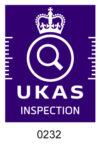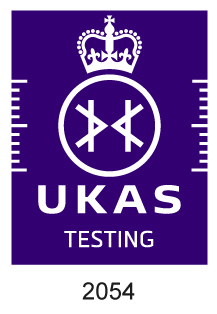Menu
close
**LATEST** New quantitative face fit services for RPE
Book in today

For any social housing provider, the wellbeing of your customers is at the heart of your work. This means that you’re focused not only on providing comfortable spaces for them, but ones that are safe, too. That’s why ensuring that you stay compliant with the basic health and safety requirements is critical.
For those managing property, it’s yet another serious challenge on top of an already extensive list of demands on your time, and it’s one that becomes more complicated depending on the size of your stock, the age or nature of your accommodations, and your budget. All these factors – and many more – can drastically change how you approach the challenge.
This is why, when carrying out legally required risk assessments, reporting, or works to mitigate hazards, social housing providers look for partners who can understand the scale of their challenges and who can provide them and those in their care with peace of mind and a safe pair of hands.
Here’s an overview of why that expertise is essential when it comes to managing asbestos in your housing stock, and what support partners such as AEC can provide.
You might already know that asbestos is considered one of the ‘Big 6’ issues in property compliance – alongside Legionella, fire, LOLER (Lifts), electrics and gas. However, it’s particularly problematic in this sector because a lot of social housing was built before the use of asbestos in construction was banned in 1999. Hence, it’s common to find asbestos in much of the ‘fabric’ of properties: in insulation, walls, roof tiles, panelling, and even in pipework. Asbestos isn’t just a problem because it’s so prevalent – but also because we can underestimate the risks.
As a reminder:
Managing the risks of asbestos is a challenge for any responsible person (no matter the size of the premises) – but social housing is a unique case. Here’s why.
If duty holders are responsible for a single building or a small premises, managing the risks of asbestos might simply mean carrying out one survey (alongside future re-inspections) for any work required. For social housing providers, this work can extend to hundreds or thousands of properties, across diverse types of housing and – at times – with the needs of vulnerable residents in mind (e.g. those living in sheltered accommodation).
This means that social landlords need to:
This is without mentioning the job of organising surveys, re-inspections, and any necessary removal of asbestos. This must all be done whilst keeping tenants and workers safe (and minimising inconvenience to residents).
Managing asbestos and staying compliant isn’t just about ensuring health and safety protocols are followed when works are being carried out. For social housing providers, it’s also about collecting high volumes of data, knowing exactly what you need to do with it, and ensuring it is visible to the right people. In among all the duties that social housing providers have to their customers, it’s a job that is simply too big for one person – and even one team.
This is why social housing providers rely on partners such as AEC. With over 25 years’ experience in asbestos consulting, surveying, risk assessment and project management, AEC’s experts have helped clients seamlessly manage their data using our bespoke online platform, conduct surveys to support investment programmes, and provide project management services that keep your necessary work compliant, safe and within budget.
For free advice on your project, you can call our friendly experts at 0203 384 6175.
Want to see how we have helped social housing providers like yours stay compliant and deliver industry-leading standards in health and safety? Follow the links to download our case studies for two providers, Southway Housing Trust and Stockport Homes.
Asbestos is a naturally occurring fibre that was widely used in construction and other industries until the late 1990s. The three types of asbestos fibres most used in the UK are: blue (crocidolite), brown (amosite) and white (chrysotile)
Before its dangers were known, asbestos was often used in buildings for insulation, flooring, roofing, and was sprayed on ceilings and walls. Its use is now banned in the UK, but buildings constructed before the year 2000 may still have asbestos in them. Materials containing asbestos are referred to ‘ACMs’ (asbestos containing materials). Asbestos can also be found in soils, where ACM waste has been disposed.
If asbestos inside buildings remains intact, it poses very little risk. It’s only when it’s damaged or disturbed that tiny asbestos fibres can be released into the air and enter your lungs when breathing. Breathing in asbestos fibres can significantly damage your lungs and their lining. The symptoms of asbestos-related conditions take many years – even decades – to appear after the original exposure to asbestos. This means that exposure a long time ago might only show up as a condition today.
UK law is very strict about managing ACMs (asbestos containing materials). It is heavily regulated to ensure best practice and safety of anyone who may come into contact with it. The Duty to Manage Asbestos is the responsibility of the Duty Holder and the guidelines are included in the Control of Asbestos Regulations 2012 (CAR 2012). The Regulations set out your legal duties and the ACOP and guidance give practical advice on how to comply with those requirements. Download the CAR 2012 regulations from our resource library.
The Duty Holder is the owner of the non-domestic premises or the person or organisation that has clear responsibility for the maintenance or repair of non-domestic premises.
The Duty Holder is required to manage the risk from asbestos by:
1. Finding out if there is asbestos in the premises, its location and what condition it is in.
2. Keeping an up-to-date record of the location and condition of the ACMs.
3. Assessing the risk from the material
4. Preparing a detailed plan of how the ACMs risks will be managed
5. Taking steps to put the plan in action
6. Reviewing and monitoring your plan
7.Having a system to inform others about the location and condition of ACMs
There are 2 main types of survey: Asbestos Management Surveys and Asbestos Refurbishment/Demolition Surveys.
A management survey will be required during the normal occupation and use of the building to ensure continued management of the ACMs in situ. As part of your management plan re-inspection surveys will be carried out. These are periodic condition inspections that checks for any deterioration of ACMs caused by natural degradation, accidental damage or poor removal practice.
A refurbishment/demolition survey will be necessary when the building (or part of it) is to be upgraded, refurbished or demolished.
Regulation 4, CAR 2012 stipulates that the duty holder manages the risk of from asbestos by finding out if there is asbestos in the premises, its location and what condition it is in. It also allows social housing providers to comply with risk assessments as outlined in Regulation 5, CAR 2012. An asbestos survey will provide sufficient information for: an asbestos register and plan to be prepared, a suitable risk assessment to be carried out and a written plan to manage the risks to be produced.
Every survey is unique, depending on its purpose and the size, usage and lifespan of the premises. We work with our clients to provide a tailored service specific to their needs. Generally, here’s what to expect during an AEC survey:
Management surveys and Re-inspection surveys are less intrusive than a refurbishment/demolition survey. The surveyor will use plans/maps of your building to identify the location of suspected ACMs, they will take photographs to show the condition of the materials and record all their findings. The surveyor will not disturb any suspected asbestos other than take a small representative sample (typically no bigger than 1cm2). In the case of any area being inaccessible the surveyor will record ‘presumed’ asbestos. Any material samples will be securely contained and labelled on site before being transferred to our laboratory for analysis.
Refurbishment and demolition surveys are more intrusive surveys. The surveyor will work alongside your development plans to inspect areas to identify any ACMs that may be disturbed throughout refurbishment works. In the case of demolition, the whole building will be surveyed. The surveyor will access all areas of the building marked for demo/refurbishment (such as floor coverings, above false ceilings, lofts, inside risers, service ducts, lift shafts, underground rooms, and under crofts). This will also involve sampling any areas that were ‘presumed’ asbestos in other less intrusive surveys. The surveyor will not disturb any suspected asbestos other than take a small representative sample (typically no bigger than 1cm2). Specialist surveyors trained to work at height and in confined spaces will carry out surveys in ‘hard to reach’ areas, and it may involve using specialist access equipment. Any material samples will be securely contained and labelled on site before being transferred to our laboratory for analysis.
Our clients benefit from AEC’s online portal. Available 24/7 all your records are contained in an easy-to-use management system. You can view all your sites survey data, risk items and action plans in real time. View AEC’s Client Portal here.
UKAS is the National Accreditation Body for the United Kingdom. They assess and accredit organisations that provide services including certification, testing, inspection and calibration. UKAS accreditation ensures the highest levels of impartiality and competence through a continuous assessment process. This allows clients to have confidence in the quality of services provided. View our UKAS accreditations here.

